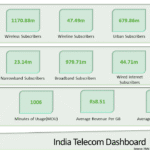Samsung while continuing to mark its strong presence in the ultra-premium or luxe segment of Android smartphones through S and Z series and emerging as the de facto choice for anyone wanting to spend more than ₹100,000 on a smartphone based on Android, isn’t losing focus on the volume market.
The M series which it launched in 2019 just before the world saw something unprecedented in the form of covid-19 pandemic, has successfully paid off for the brand. Through M series, Samsung has not only established itself in the online space, which was contributing more than half of the sales by volume till last year, but also helped it reposition in the affordable segment where it had earlier unsuccessfully attempted with Tizen as an OS especially in the sub ₹6,000 market. It has now developed Tizen as its platform for IoT ecosystem.

Prior to the launch of M series, Samsung essentially had only S series as a successful one, which could give it the revenues but not the volumes. Other series including A was a bit struggling to establish itself especially in front of sustained success of OnePlus that attracted others including Vivo and OPPO to the mid premium segment.
For the rest of the year 2023, I see Samsung having a strong focus on the upper and lower crust of 5G opportunity. With S and Z series it will continue to skim the opportunity of gaining customers wishing to remain on Android but wanting an ultra-premium smartphone. The users wanting to differentiate and experiment something new in the form factor will be addressed through Z series. For the sub-20,000 segment, it is enriching the portfolio with subsequent launches of M series. The recent M34 smartphone launch gives us a view of how ‘monstrous’ its smartphones are going to be which not only will have 5G connectivity, but also have best of the specifications in the segment along with some early experience of few premium features like nightography.
Samsung is doing this by exhibiting its strength of having end-to-end control and to a greater extent ownership of the value chain. This is going to impact several brands especially the R brands (Redmi and Realme) significantly further in their market standing. For both the brands, selling smartphones beyond ₹20,000 has been a challenge yet to overcome. Even though Xiaomi created a standalone brand for its premium offerings, the acceptance in market is yet to happen. Samsung’s move to attack voraciously these brands is a double-edged sword for the brands in the vicinity especially the R brands.
With anyone investing in a 5G smartphone right now even in the affordable segment of under ₹20,000 the intent would be to own this device for at least 4-5 years. This is because we might consider the segment to be affordable segment, but the buyer is spending more by 25-30% to own a 5G smartphone in the segment. Also, with the innovation track record, there will not be any killer innovation that will make users to change their smartphones any sooner. When a consumer would factor all this in the decision making along with the established channel agnostic equity and strength of Samsung, it is anytime advantage Samsung. More and more users are expected to give preference to Samsung than other brands especially Redmi and Realme.
With Samsung’s move to give some teaser features of premium segment in this price range, it also roadblocks some opportunity for competition brands (including R-brands) in the above ₹20,000 segment, primarily ₹20-25,000. The user will start making a trade-off between getting a feature rich Samsung smartphone in under ₹20,000 versus an R-brand model priced between ₹20,000-25,000. The decision could again go in the kitty of Samsung. Samsung’s this strategy means the road ahead for R-brands is not going to be an easy and smooth one. While to continue to attempt a transition to the premium segments and start getting recognised as premium brands, they face a monster as Samsung in their bastion. That is going to push them further down the market hierarchies. Not a good sign for both Realme and Redmi.






2 responses to “Samsung’s Monstrous attack on sub 20,000 5G opportunity to pinch the R brands further”
[…] an increasing number of buyers opting for 5G-enabled devices, the Y27 may face difficulty in garnering serious consideration from potential buyers for […]
[…] Samsung has unveiled its latest lineup of premium devices, including foldable smartphones (Galaxy Z Fold 5 and Flip 5), smartwatches, and flagship tablets, at this year’s major launch event. Among these new products, the Galaxy Tab S9 Ultra stands out with its exceptionally large screen, impressive specifications, and a form factor rarely seen in the Android tablet market. […]